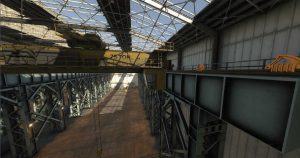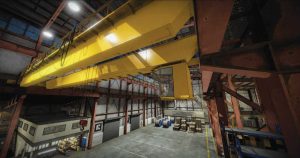Crane training in North America is being slowly revolutionised by increasingly affordable simulator systems. Daniel Searle reports.  
Crane simulator systems allow operators and trainees to practise their skills in a safe, repeatable situation, whether to work on passing a test to achieve a level of certification, or just as a refresher course for an experienced operator who has been out of the game for a little while. In the construction crane industry, it’s clear why simulators are valuable: as cranes in this sector, such as tower cranes and crawler cranes, are hired, the cost of giving an apprentice sufficient hours at the dashboard can be prohibitive. There are also the safety considerations of letting a novice operate such a large, and potentially unstable, piece of equipment. Within the overhead lifting sector, one could imagine that there might be less call for simulators, as these cranes are permanently owned by users, thereby presenting more opportunity for use within training without the associated rental costs, and are ostensibly simpler pieces of equipment to operate. In fact, the use of simulators is thriving and growing, as technology improves, prices fall, and the range of uses for simulators within overhead lifting broadens. Firstly, there’s the question of when simulators are needed, and what they can be used for. “Overhead cranes can be difficult to reserve for training as they’re usually in use,” says Drew Carruthers, director of training solutions at CM Labs, based in Montreal, Canada. “And while they may be technically less complex to manoeuvre than tower cranes, for example, they have the difficulty of being integrated into their surrounding environment. So they require awareness of what exists around the crane.” That means that simulators are used for safety training, and not just for operators— anyone who might enter the factory floor can use a simulator to help understand the equipment, and the dangers and precautions required. With regards to the environment around cranes, CM Labs offers a modelling service, through which a virtual recreation of a customer’s facility is produced, making training more focused and specialised. For smaller budgets, generic set-ups are available too, which still help to improve safety levels, says Carruthers. Simulators are also used to help operators gain experience with new technologies, says Carruthers, for example the dual-hoist ship-to-shore crane simulator the company produced. That’s one of the systems that CM Labs has produced for dockside and port applications, which also include a simulation of an RTG 6+1 port crane. Crane training in North America is being slowly revolutionised by increasingly affordable simulator systems
| 
